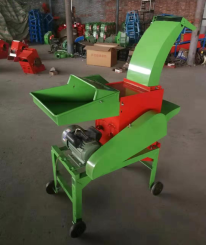feed pellet machine
Desemba . 04, 2024 18:08 Back to list
feed pellet machine
Understanding Feed Pellet Machines An Overview
Feed pellet machines are essential equipment in the agricultural and livestock industries, playing a pivotal role in the production of high-quality animal feed. These machines convert raw materials like grains, oil cakes, and other feed ingredients into pellets, which are easier to store, transport, and consume by livestock. This article explores the significance, functioning, and advantages of feed pellet machines.
What is a Feed Pellet Machine?
A feed pellet machine, also known as a pellet mill, is a mechanical device that compresses and shapes raw ingredients into cylindrical pellets. The process typically involves several steps grinding, mixing, conditioning, and pressing. The machine utilizes heat and pressure to bind the feed ingredients, enhancing their nutritional value while making them palatable and digestible for animals.
The Working Process
1. Grinding The first step involves crushing the raw materials to a fine powder, which increases the surface area and promotes better mixing during subsequent stages. This is typically achieved using hammer mills or grinders.
2. Mixing After grinding, the powdered ingredients are mixed together with additives such as vitamins, minerals, and feed supplements to create a uniform mixture. This step is crucial, as it ensures that each pellet contains a balanced nutrient composition.
3. Conditioning In this stage, steam or water is added to the mixture to increase moisture content and temperature. Conditioning helps in softening the ingredients, making them more pliable and easier to compress into pellets. It also activates enzymes that enhance feed digestibility.
4. Pelleting The conditioned mixture is fed into the pellet mill, where it is forced through a series of die holes under high pressure and temperature. The resulting pellets are cut to the desired length as they exit the die. The heat generated during this process helps to kill harmful bacteria and pathogens, improving the feed's safety.
5. Cooling and Drying After pelleting, the hot pellets are cooled to reduce moisture content and increase shelf life. This step prevents the growth of mold and bacteria, ensuring the feed remains fresh and nutritious for extended periods.
feed pellet machine

6. Packaging Finally, the pellets are packaged for storage and transportation, making them ready for distribution to farms and feed stores.
Advantages of Using Feed Pellet Machines
1. Nutritional Value Pelleted feed retains a higher nutritional value compared to mash feed. The pelleting process helps in binding vitamins and other nutrients effectively, ensuring animals receive balanced nutrition.
2. Improved Feed Efficiency Animals tend to consume pelleted feed more readily than fine powders. Pellets reduce feed wastage, leading to better feed conversion ratios and overall improved growth rates.
3. Easy to Store and Transport Pellets take up less space compared to loose feed, making storage easier. They are also less prone to spoilage, pests, and moisture absorption, which enhances their transportability.
4. Reduced Feed Contamination The pelleting process eliminates harmful pathogens, reducing the risk of disease outbreaks among livestock. This ensures healthier animals and better yield for farmers.
5. Customization Modern feed pellet machines facilitate the production of bespoke feeds tailored to specific livestock species, age groups, and nutritional requirements. This versatility enables farmers to optimize feed formulations for maximum productivity.
6. Cost-Effectiveness While the initial investment in a feed pellet machine can be significant, the long-term savings from improved feed utilization and reduced feed wastage offer a quick return on investment. Additionally, the ability to produce customized feeds can lower overall feed costs.
Conclusion
Feed pellet machines are revolutionary tools in the agricultural sector, significantly enhancing the efficiency and quality of animal feed production. By converting raw materials into high-quality pellets, these machines not only facilitate better livestock care but also promote sustainable farming practices. As the demand for animal products increases globally, the role of feed pellet machines will continue to be paramount in meeting the nutritional needs of livestock, ensuring food security, and supporting the growth of the agricultural industry. Investing in a feed pellet machine is not just a step towards modernizing a farm; it’s a commitment to the health and well-being of animals and, ultimately, to the sustainability of food production systems.
-
High Performance Exhaust Fan – Efficient Ventilation Solutions for Home
NewsJun.10,2025
-
High-Quality Gestation Pen for Sows Durable Mobile Pig Pen & Simple Pig Pen Solutions
NewsJun.10,2025
-
High Quality Rabbit Cage Double Tier Designs & Welded Wire Mesh Supplier
NewsJun.10,2025
-
Floating Fish Feed Machine - High Efficiency Floating Fish Feed Extruder for Small Scale Production
NewsJun.10,2025
-
Premium Poultry Housing Solutions Mobile & Commercial Free Range Options
NewsJun.10,2025
-
Industrial FRP Fans Corrosion-Resistant Blades & Centrifugal Systems
NewsJun.09,2025






